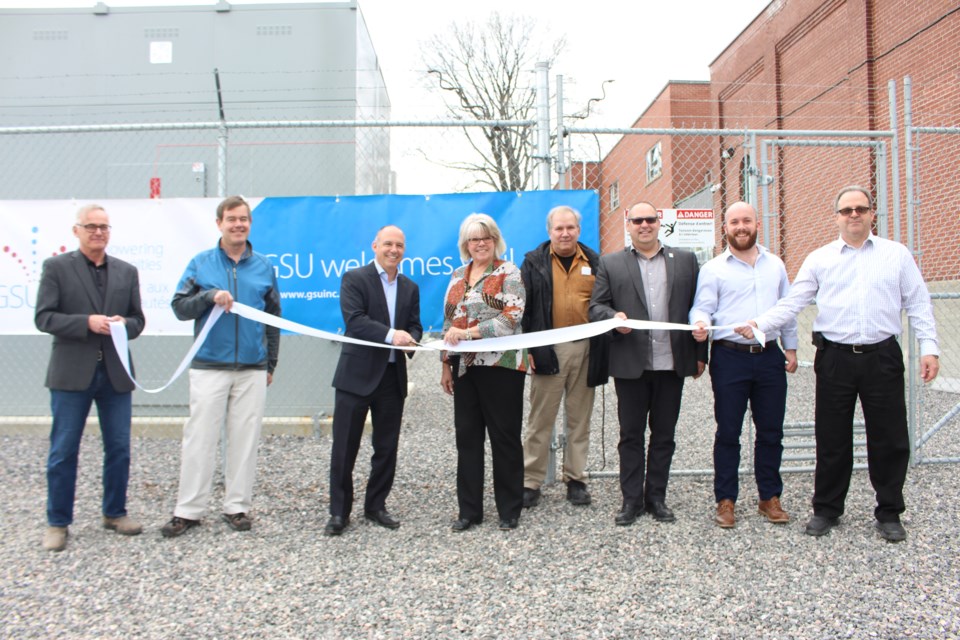Greater Sudbury Utilities celebrated the commissioning of its first new substation in nearly 20 years on May 22, and the first of a number of new substations slated to go online by 2020.
The newest substation is located on Kathleen Street, just off Notre Dame Avenue, and was initially built back in 1942, with an upgrade made in the 1950s.
Last year, GSU did a complete rebuild of the substation, essentially making it brand new, coming in 10 per cent below the budgeted $3.85 million and on time. The utility company is currently in the construction phase of the Capreol substation, and the Cressy substation is scheduled for 2020, with others expected to follow.
Once the Cressey substation is completed, Kathleen will serve nearly one quarter of GSU's customers, and the the company will decommission three smaller substations from service.
So what is it that a substation actually does? The Kathleen substation will receive high-voltage electricity at 44 KV (44,000 volts), reduce it to 12 KV and route it to neighbourhood transformers, where it is further stepped down in voltage to be used in homes and businesses.
"These are really designed for you to not notice them as you drive by," said Wendy Watson, director of communications, GSU. "This particular substation looks significantly different than it did a year and a half ago."
The design of the Kathleen substation is what is known as a pad mount, in other words everything is on the ground floor, as opposed to older models of power delivery which was from large towers.
"This helps obviously with our snow load, reliability, animal contacts is one of the largest things we contend with, so with everything being down and enclosed it's going to be able to help reduce things like that," said Kyle England, senior protection and control technologist, GSU.
"From a point of maintenance as well it's going to be a lot easier."
The new equipment at the Kathleen substation can handle a higher voltage than previously, which allows a further reach when it comes to backup power in the event of unplanned power outage.
"With the higher voltage and newer equipment we can extend our reach so if there's an outage or failure, this station will be able to backup or support a larger area," said England. "With the upgraded voltage, it helps complete the loop within the city. We've added what's called an 'on-load tap changer' for voltage support, so it'll stretch from New Sudbury over to the Gatchell area, and then into Sudbury south."
Additionally, the Kathleen Street substation is fully redundant, with two transformers, so that in the event that maintenance needs to be done, the station can support itself, and customers won't be without power.
"We've built that redundancy into this station so that if it does need to be taken out of service or have maintenance, other areas of the city can feed the area, so we've built it in a way that it can support itself as well as other areas," said England.
"That's why we built two transformers, two switch gears, that wasn't there with the original station."
Future substations will be built in much the same manner, says England, and apart from increased reliability, he says the biggest thing people will notice is not really noticing the substations at all.
"I think the main thing the public will see or notice is the change from the overhead tower structures to the pad mount structure that we have here," said England.
Several of GSU's substations were built right after the Second World War, and the Kathleen Street substation was built during the war. With a number of the substations reaching the end of their life cycle, the utility provider is looking ahead to keep power flowing efficiently throughout the city.
"This is a big deal and a good news story. GSU is a responsible steward of a critical system we rely on," said GSU board chair Mark Signoretti.
"When things reach end of life, you have to make planned, reasonable investments in renewal to prevent system failure as well as making sure you don't end up with an infrastructure deficit you can't afford to fix. That's what we're doing."
